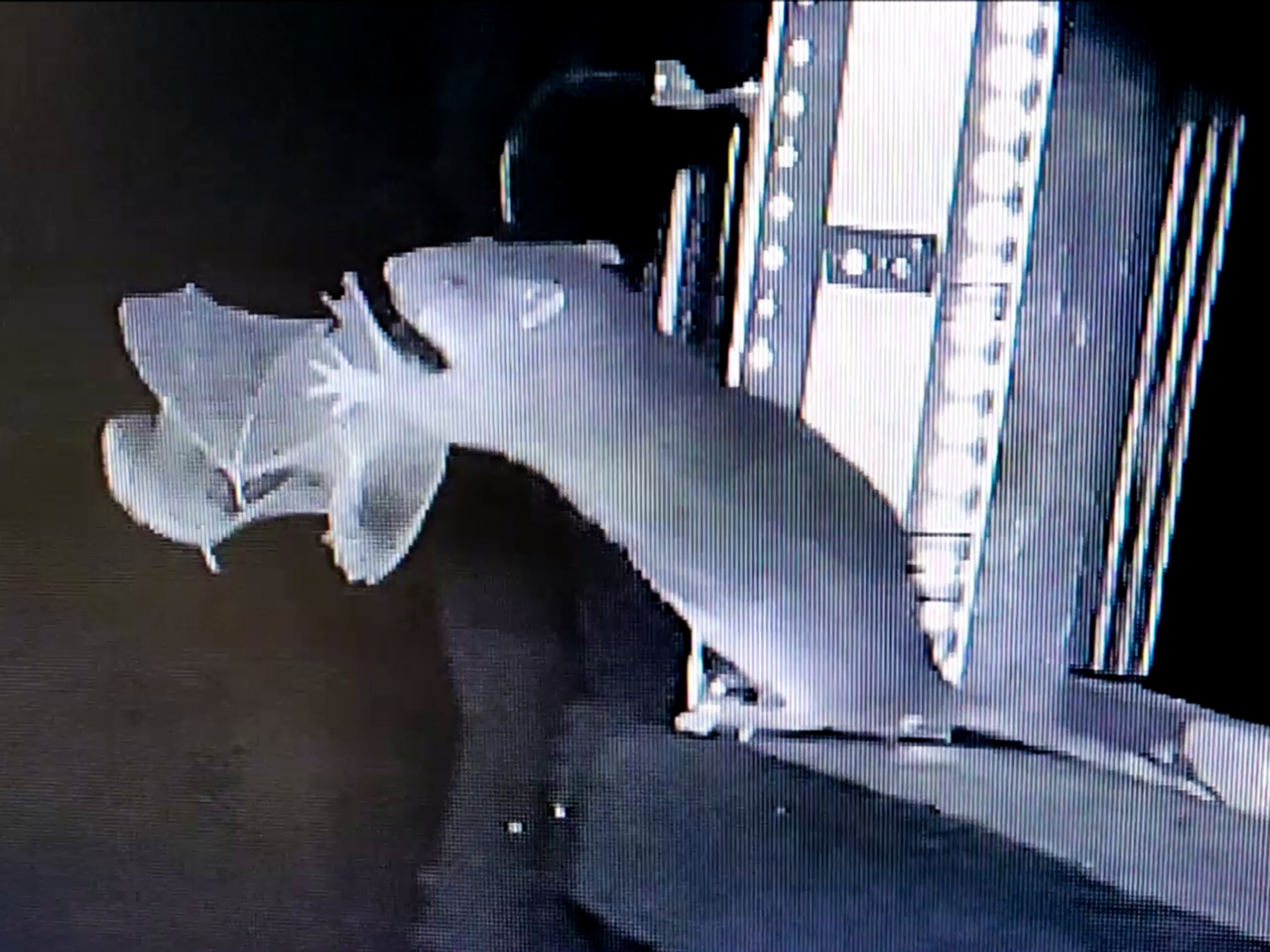
"Whispering" Bat Evolved to Trick Prey
Bats' fainter calls escape moth's hearing.
Meet the barbastelle bat, the world's first known moth whisperer.
The European bat has lowered its voice to evade detection by some moth species, allowing the mammal to swoop in for the kill, new research shows.
To help "see" in the dark, most bats echolocate, sending out sound waves and listening for echoes bouncing off objects, including prey.
(Related: "Early Bats Flew First, Developed 'Sonar' Later.")
Moths with ears—a feature that evolved independently in several moth species—can hear the bat calls and avoid the predators. Some species, such as tiger moths, even use ultrasonic clicks to "jam" a bat's sonar.
Yet one species of bat, the barbastelle, has evolved a whispering counterstrategy to outwit the eared moths—an unusual occurrence in nature, said study leader Holger Goerlitz, a biologist at the University of Bristol in the United Kingdom.
"Evolution is putting larger pressure on prey to evolve adaptations to win against the predator," Goerlitz said, "so therefore it's rare when you find cases in nature when a predator is winning in the arms race."
Unlocking the Bat Whisper
Before the study, the researchers had noticed that barbastelle bats are particularly proficient hunters. To find out why, the scientists would need to find out what exactly the bats hunt, so Goerlitz's team ran a genetic analysis of barbastelle feces.
The results showed the bat ate mostly moths with ears, such as the large yellow underwing moth.
The scientists then went out into the night to find out how well eared moths can detect the barbastelle bat's sonar.
At a site in southern England, the team attached a small electrode to the auditory nerve of a captured yellow underwing moth kept on the ground. The electrode recorded when the nerve was activated by a passing bat's echolocation call.
Simultaneously, the researchers recorded with microphones the echolocation calls of several flying barbastelles, which allowed the team to calculate where in space the sound had originated. For comparison, the team also recorded echolocation calls of a related bat species, Leisler's bat.
(Related: "Bats Use Magnetic 'Compasses' to Navigate, Study Says.")
Later, in the lab, the scientists pieced together when the moth's auditory nerve had been firing in relation to an incoming echolocation call.
The results showed the barbastelle can get as close as 11 feet (3.5 meters) to the grounded moth without being detected—most eared other moths can hear bats as far away as 100 feet (30 meters), according to the study.
Further analysis of the echolocation calls revealed that the barbastelle's calls are up to a hundred times fainter than those of other bats. (Interactive: Hear tropical bat calls.)
Bat Whispers Provide Exclusive Food Source
The bats' whispering is something of a disadvantage, since it effectively limits their "vision," Goerlitz noted.
"All of the other bats have a large call that travels far, [like] a bright torch," he said, but the barbastelle bats' sonar is like "a candle, only 'illuminating' the area just around them."
Yet this specialized ability also means the barbastelle has a corner on the eared-moth market, since non-whispering bats generally can't catch the insects.
Will the moth develop a counter-counterstrategy to the whispering? Unlikely, Goerlitz said. If the moth becomes even more sensitive to noises, the fragile insect might become too disturbed by innocuous sounds, such as wind and rustling leaves, he said.
So for now it's bat 1, moth 0.
The bat-"whispering" study will appear September 14 in the journal Current Biology.





